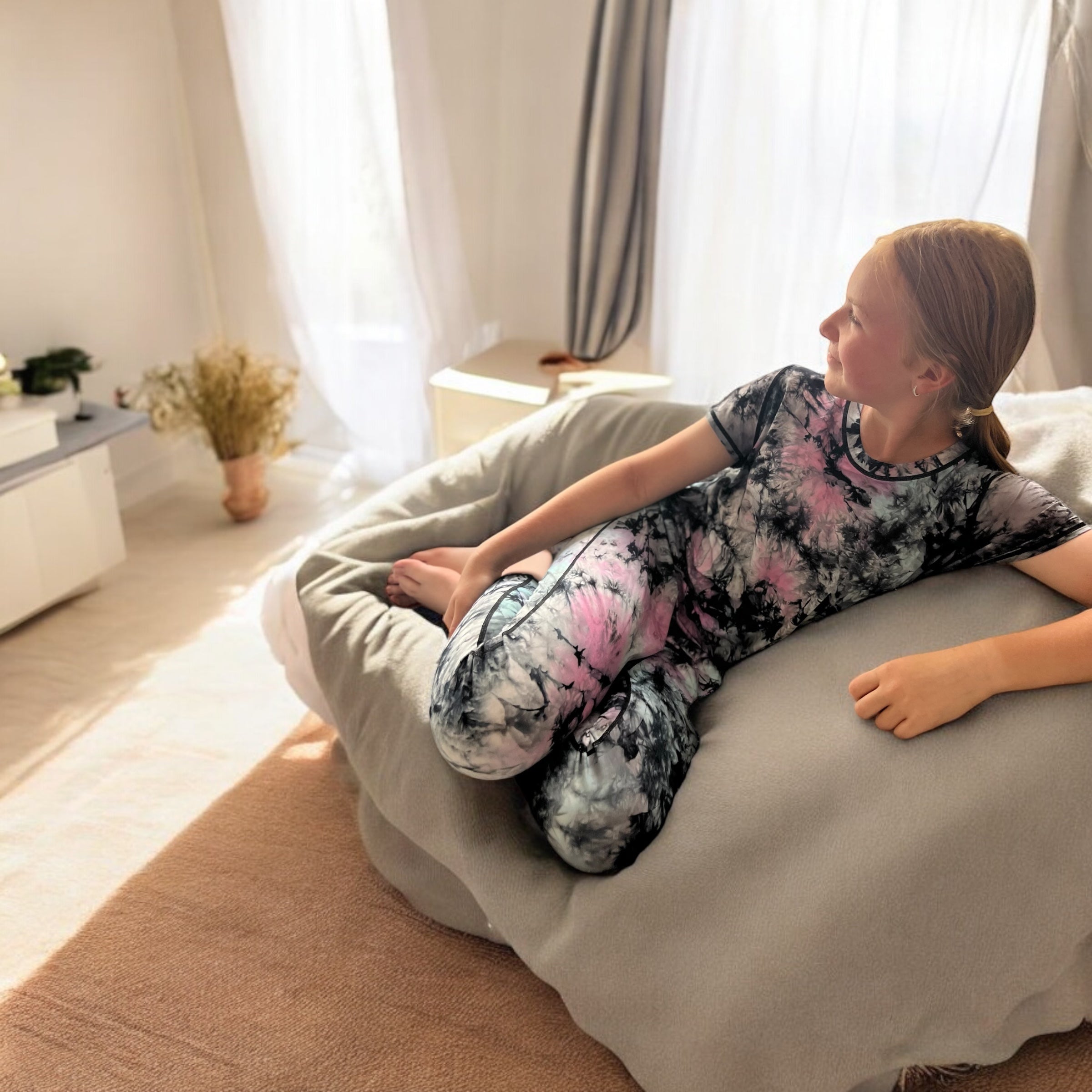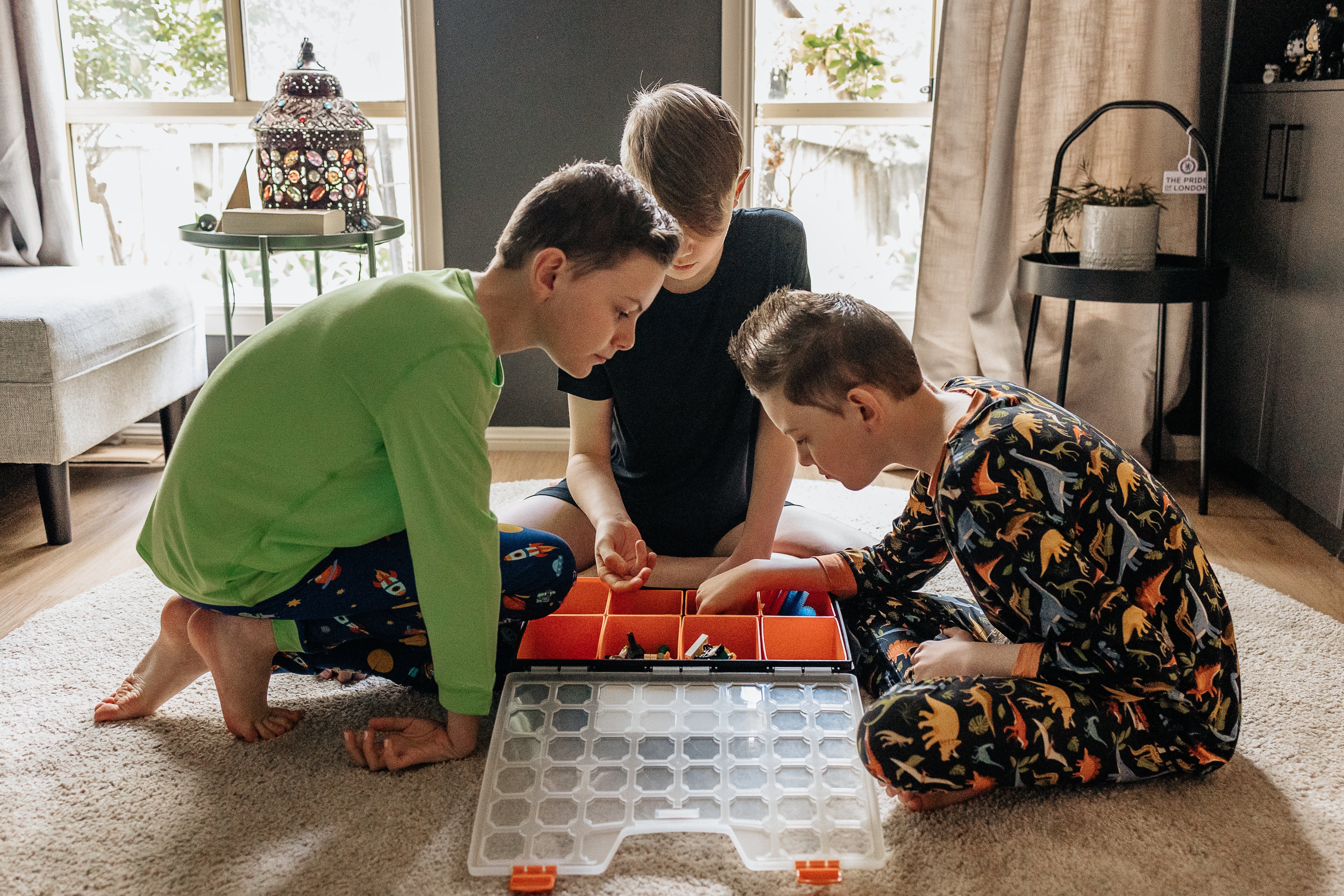
Top Picks for Sensory-Friendly School Holiday Comfort
The holiday season is a special time for families but it can also be challenging for children with sensory sensitivities. Bright lights, loud music, crowded spaces, and changes to routine can create discomfort or overwhelm. Planning a sensory-friendly school holiday can help reduce stress and make the season more enjoyable for everyone.
In this blog, we’ll share practical ways to prepare for the holidays with sensory-friendly strategies. We’ll also explore the best comfort clothing for kids with sensory needs, answer common questions about adaptive clothing, and offer helpful tips to support a calm and inclusive holiday experience.
What is Sensory-Friendly Clothing?

Sensory-friendly clothing is designed to reduce discomfort for children with sensory sensitivities. It eliminates common irritants like tags, bulky seams, and rough fabrics that can bother sensitive skin. Instead, it features soft materials, flat seams, and tag-free designs that help children feel calm, comfortable, and regulated throughout the day.
Today, some brands offer modified clothing for sensory- sensitive kids. These clothes help children feel relaxed and regulated. Some of the features
Include:
-
Easy-on/easy-off designs
-
No zippers or buttons
-
Temperature-regulating fabrics
Many parents find that their children can wear sensory-friendly clothing for longer periods without discomfort. This can be particularly helpful during holidays or special occasions when kids are often expected to wear certain outfits that may not always feel comfortable.
Let me know if you want it even more conversational or tailored to your brand tone!
What Clothing is Best for Kids with Sensory Sensitivities?
When shopping for sensory-friendly clothes, consider:
-
Cotton or bamboo fabric for softness and breathability
-
Compression clothing to provide a calming, hugging sensation
-
Loose-fitting or seamless underwear and socks
-
Tagless t-shirts and elastic-waist pants
Many children feel more at ease in clothing with a consistent texture and minimal variation in fabric types. Signs of discomfort like scratching, tugging at collars, or frequently changing clothes, can be helpful clues in identifying sensory triggers. Involving your child in choosing their outfits can also make a big difference, helping them feel more comfortable and giving them a sense of autonomy.
How Do I Prepare My Child with Sensory Sensitivities for a Holiday?
Preparation is key when planning a sensory-friendly holiday. Here’s how to reduce stress and
build comfort:
-
Create a visual schedule: Use pictures or icons to outline daily plans.
-
Talk about the trip early: Use social stories to explain what to expect.
-
Pack favorite comfort objects: Bring along familiar sensory-friendly comfort items like a blanket or stuffed animal.
-
Practice transitions: Gradually introduce new routines or environments before the trip.
-
Plan for downtime: Schedule breaks to decompress.
Keeping a routine during your trip can help. Try to have meals and bedtime at the same time each day. This gives your child a sense of predictability. If you’re flying or using public transport,
prepare them in advance. Show photos, videos, or use simulations to help them know what to expect.
How Can I Help My Child with Sensory Sensitivities on Holiday?
Even with planning, challenges may arise. During the trip:
-
Stick to a routine when possible
-
Offer sensory breaks in quiet spaces
-
Respect sensory preferences (e.g., letting them skip noisy activities)
-
Encourage self-regulation accessories like weighted items or sensory fidgets
-
Use positive reinforcement to reward coping skills
You might want to create a “calm kit” for your child. Include items like earplugs, calming essential oils, or visual aids. These accessories can help with regulation during the day. Familiar music or an audiobook playlist can help with transitions. They can also calm your child when feeling overstimulated.
What Is the Best Fabric for Kids with Sensory Issues?
Fabric choice can make or break a child’s comfort level. Top materials for sensory-friendly clothes include:
-
Organic cotton: Soft, breathable, and hypoallergenic
-
Bamboo: Naturally smooth and temperature regulating
-
Modal or Tencel: Lightweight and gentle against the skin
Avoid scratchy wool, stiff denim, or anything with glitter, sequins, or raised seams. The smoother and more breathable the material, the better for preventing meltdowns due to discomfort.
How to Make Sensory-Friendly Clothing?
DIY sensory-friendly clothing options can be crafted at home. Here are a few tips:
-
Remove tags and labels from inside garments
-
Replace buttons with Velcro or elastic bands
-
Sew flat seams or purchase seamless patterns
-
Add pockets for sensory accessories (like fidget items or stress balls)
-
Use natural, breathable fabrics
Parents who enjoy sewing can create personalised adaptive clothing. These clothes can reflect their child’s interests and provide comfort. You can also find online communities that share patterns and tips for making sensory-friendly garments.
What is Adaptive Sensory Clothing?
Adaptive sensory clothing combines accessibility with sensory relief. These pieces are ideal for kids with both physical and sensory challenges. Key features include:
-
Magnetic closures instead of zippers
-
Pull-on pants and tops
-
Clothing with built-in compression or deep pressure zones
Some adaptive clothing brands work with occupational therapists. They design clothes that
support a child’s sensory needs. Learn more at Comfort on the Spectrum’s Adaptive Clothing Collection.
Sensory-Friendly Holiday Ideas
Want to make the break more special? Try these sensory-friendly holiday ideas:
-
Nature walks in quiet parks or gardens
-
Sensory play zones at local museums or therapy centers
-
DIY holiday crafts in a calm home environment
-
Indoor camping nights with fairy lights and tents
-
Visit during off-peak hours to avoid crowds
-
Baking sensory-friendly treats with gluten-free or dairy-free options
-
Create a holiday countdown calendar with sensory surprises behind each door
These small changes can turn a holiday into an adventure that your child looks forward to.
Embrace Comfort and Joy
Every child deserves a joyful holiday. Focus on sensory comfort and choose the right sensory- friendly comfort clothes. Use adaptive clothing for sensory-sensitive kids. This can turn an overwhelming season into one full of warmth and fun. Whether you stay home or travel, creating a sensory-friendly school holiday will make a big difference. It will help boost your child’s happiness and confidence.
Ready to help your child feel comfortable this holiday season? Check out our favorite sensory- friendly clothes and comfort accessories. You can also subscribe to our blog for more parenting tips, product reviews, and holiday planning ideas.




Leave a comment
This site is protected by hCaptcha and the hCaptcha Privacy Policy and Terms of Service apply.